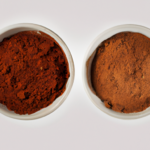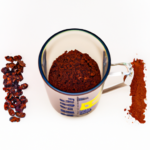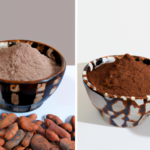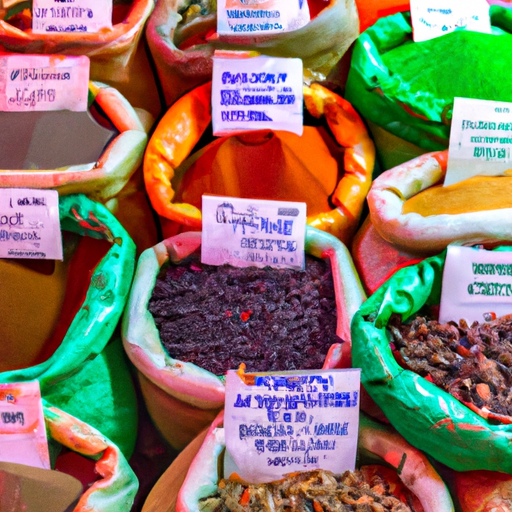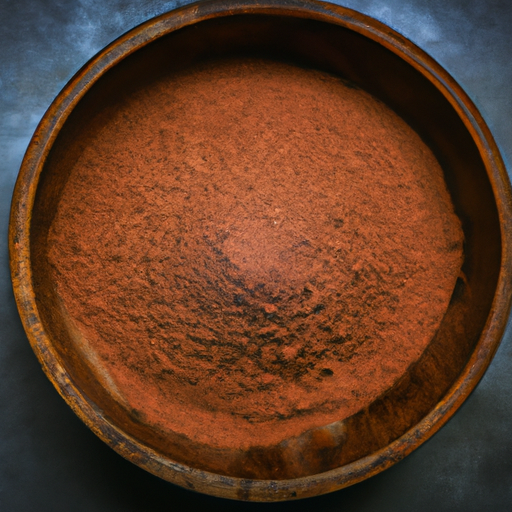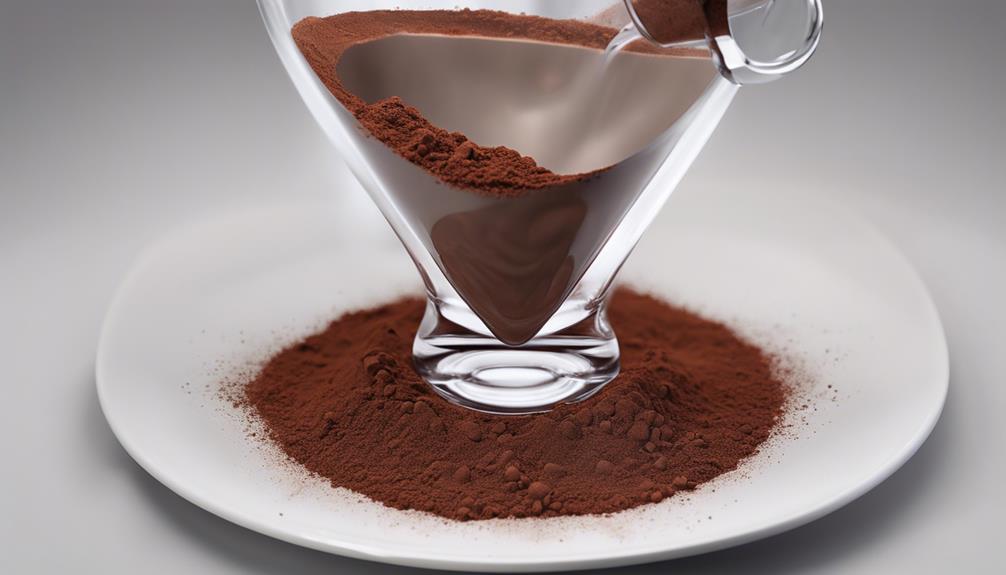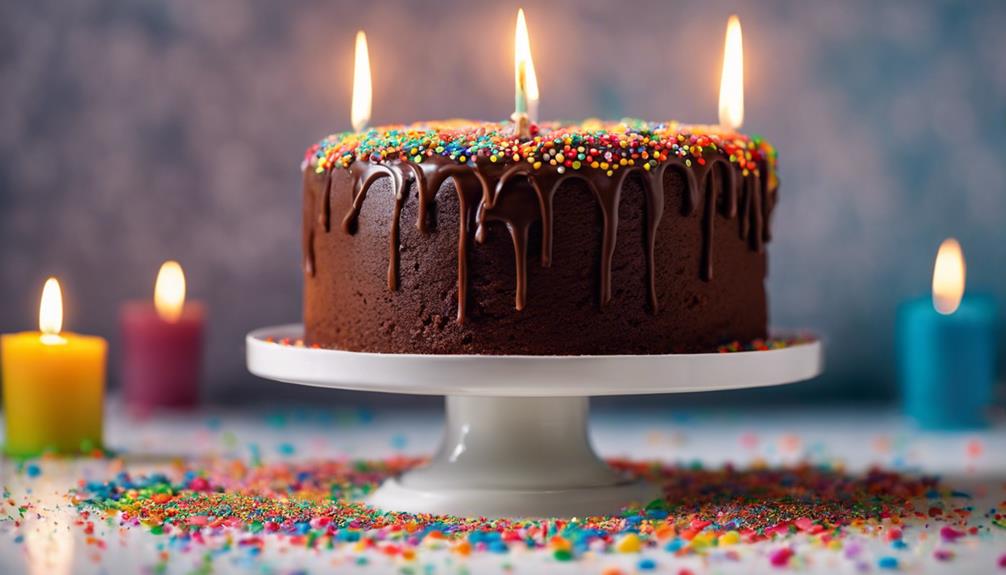As I stood in front of the store shelves, contemplating which type of cacao powder to choose, a flood of questions rushed through my mind. What exactly is the difference between raw cacao powder and regular cacao powder? Which one is better for my health? And why is there such a price difference between the two?
Curiosity got the best of me, and I delved into the world of cacao beans, their origins, and the various processing methods they undergo. What I discovered was fascinating.
Raw cacao powder, the pure and unprocessed option, retains more of the bean’s natural nutrients and antioxidants. On the other hand, cacao powder undergoes additional processing, resulting in a smoother texture but also a slight reduction in nutritional content.
In this article, we will explore the nutritional differences between raw cacao powder and cacao powder, the impact of processing on their antioxidant and nutrient content, and provide tips for choosing the right type for your culinary needs. So, grab a cup of your favorite hot beverage and join me on this delicious journey into the world of cacao powders.
Key Takeaways
- Raw cacao powder is delicate and prone to oxidation, so it should be tightly sealed.
- Raw cacao powder adds intense, bitter taste to desserts like chocolate lava cakes and truffles, while cacao powder offers a mellow and balanced flavor, perfect for chocolate chip cookies and hot chocolate.
- Raw cacao powder lends a gritty and earthy feel, ideal for adding crunch to granola or velvety texture to smoothies, while cacao powder has a smoother texture, great for silky chocolate mousses and creamy chocolate sauces.
- Raw cacao powder can be incorporated into smoothies, energy balls, and raw desserts, while cacao powder is great for baking and adds a rich chocolatey flavor to cakes, cookies, and brownies.
The Origins and Processing Methods of Cacao Beans
The origins and processing methods of cacao beans play a crucial role in distinguishing between raw cacao powder and cacao powder.
The origins of cacao beans can vary, with different varieties grown in regions such as South America, Africa, and Asia.
These beans undergo a series of processing methods to transform them into cacao powder. The beans are harvested, fermented, and dried to remove excess moisture. Next, they are roasted to enhance the flavor and aroma.
After roasting, the beans are ground into a fine powder, which can then be further processed to create different types of cacao powder.
Raw cacao powder, on the other hand, is the pure and unprocessed option. It is made from raw cacao beans that have not been roasted or subjected to high temperatures. This preserves more of the natural nutrients and flavors found in the beans.
Raw Cacao Powder: The Pure and Unprocessed Option
Get ready to indulge in the purest and most natural form of cacao with raw cacao powder.
Unlike its processed counterpart, raw cacao powder is made by cold-pressing unroasted cacao beans, ensuring that all the beneficial nutrients are retained.
This means that raw cacao powder is packed with antioxidants, minerals, and vitamins, making it a healthier choice compared to processed cacao powder.
It is free from additives, sugars, and preservatives, offering a truly pure and unadulterated cacao experience.
Raw cacao powder has been linked to various health benefits, including improved heart health, enhanced mood, and increased brain function.
While it may require a bit more effort to incorporate into recipes due to its strong and intense flavor, the health benefits it provides make it worth it.
Transitioning to the subsequent section about cacao powder: the processed alternative, let’s explore the convenience and differences it offers.
Cacao Powder: The Processed Alternative
Why don’t you dive into the world of processed cacao powder and discover a whole new flavor experience? Processed cacao powder is a popular alternative to raw cacao powder, offering a different taste and texture.
Here are some benefits of consuming cacao powder:
- Rich in antioxidants that help fight free radicals
- Contains flavonoids, which may improve heart health
- Provides essential minerals like magnesium and iron
- Boosts mood and energy levels due to the presence of theobromine
However, it’s important to be aware of the potential risks of consuming processed cacao powder. Some processed varieties may contain added sugars, artificial flavors, and preservatives, which can negatively impact health. It’s crucial to read labels and choose high-quality brands.
Now, let’s move on to the next section and explore the nutritional comparison between raw cacao powder and cacao powder.
Nutritional Comparison: Raw Cacao Powder vs. Cacao Powder
Explore the contrasting nutritional profiles of raw cacao powder and its processed counterpart to visualize the divergent health benefits they offer. When it comes to nutritional benefits, raw cacao powder takes the lead. It is packed with antioxidants, flavonoids, and essential minerals like magnesium, iron, and zinc. On the other hand, cacao powder loses some of its nutritional value during processing. While it still contains antioxidants and minerals, the levels are lower compared to raw cacao powder. Taste-wise, both varieties offer a rich, chocolatey flavor, but raw cacao powder tends to have a more intense and slightly bitter taste. To understand the nutritional differences better, refer to the table below:
| Nutrient | Raw Cacao Powder | Cacao Powder |
|---|---|---|
| Antioxidants | High | Moderate |
| Flavonoids | High | Moderate |
| Magnesium | High | Moderate |
| Iron | High | Moderate |
| Zinc | High | Moderate |
Now, let’s delve into the impact of processing on antioxidant and nutrient content.
The Impact of Processing on Antioxidant and Nutrient Content
Discover how processing affects the antioxidant and nutrient content of cacao powder, and learn how it can impact the overall health benefits you can obtain.
When cacao beans are processed to make cacao powder, the methods used can have a significant impact on the preservation of antioxidants and the retention of nutrients.
Raw cacao powder is made by cold-pressing unroasted cacao beans, which helps to preserve the natural antioxidants and nutrients present in the beans.
On the other hand, regular cacao powder is made by roasting the beans at high temperatures, which can lead to a loss of some antioxidants and nutrients.
This processing difference can impact the overall health benefits you can get from consuming cacao powder.
Understanding the price difference between raw cacao powder and cacao powder will further enhance your knowledge of these two options.
Understanding the Price Difference between Raw Cacao Powder and Cacao Powder
Understanding the price difference between raw cacao powder and cacao powder can be illuminating. It’s important to consider the health benefits associated with each.
Raw cacao powder is made from unroasted cacao beans, preserving its natural antioxidants and nutrients. This minimal processing and higher nutrient content often result in a higher price tag.
On the other hand, cacao powder undergoes a roasting process, which can reduce some of its antioxidant and nutrient content. This processing method allows for a lower price point.
When choosing the right type for your culinary needs and preferences, it’s essential to weigh the price comparison against the potential health benefits they offer.
Transitioning into the subsequent section, it’s important to consider which type of cacao powder is best suited for your individual needs.
Choosing the Right Type for Your Culinary Needs and Preferences
When it comes to selecting the perfect cacao powder for your culinary needs and personal preferences, you’ll want to consider which type best complements your unique taste buds and elevates your dishes to a whole new level.
Raw cacao powder and regular cacao powder have distinct differences that can affect the flavor and texture of your recipes. Raw cacao powder is made from unroasted cacao beans, which helps retain more of its natural nutrients and antioxidants. It has a slightly bitter taste and a deeper, more complex flavor profile.
On the other hand, regular cacao powder is made from roasted cacao beans, giving it a milder, sweeter taste. It is often used in baking and desserts.
Consider your preferences and the specific culinary needs of your recipe when choosing between these two types of cacao powder. Understanding the differences will allow you to make an informed decision that enhances your culinary creations.
Now, let’s move on to some tips for storing and using raw cacao powder and cacao powder.
Tips for Storing and Using Raw Cacao Powder and Cacao Powder
Get ready to elevate your culinary creations with these essential tips for storing and using the rich and flavorful cacao powder.
Proper storage is key to preserving the freshness and quality of both raw cacao powder and cacao powder. To ensure longevity, store both types in an airtight container in a cool, dark place away from heat and moisture.
Raw cacao powder is more delicate and prone to oxidation, so it is crucial to keep it sealed tightly.
When using cacao powder in recipes, remember that its intense flavor can easily overpower other ingredients, so start with a small amount and adjust to taste.
Incorporate raw cacao powder into smoothies, energy balls, or raw desserts for a healthy twist.
On the other hand, cacao powder is great for baking, adding a rich chocolatey flavor to cakes, cookies, and brownies.
Now, let’s explore recipes and dishes that highlight the unique qualities of each type.
Exploring Recipes and Dishes That Highlight the Unique Qualities of Each Type
Discover the delectable ways you can enhance your culinary creations by incorporating the unique qualities of raw cacao powder and cacao powder into a variety of recipes and dishes.
When it comes to highlighting flavors, raw cacao powder is the star. Its intense, bitter taste adds depth and richness to desserts like chocolate lava cakes or dark chocolate truffles.
On the other hand, cacao powder offers a more mellow and balanced flavor, making it ideal for recipes like chocolate chip cookies or hot chocolate.
When experimenting with textures, raw cacao powder lends a gritty and earthy feel, perfect for adding a crunchy element to granola or a velvety texture to smoothies. Cacao powder, however, has a smoother texture, making it great for creating silky chocolate mousses or creamy chocolate sauces.
Explore these unique qualities and elevate your recipes to new heights of deliciousness.
Frequently Asked Questions
Can cacao powder be used interchangeably with raw cacao powder in recipes?
Yes, cacao powder can generally be used interchangeably with raw cacao powder in recipes. However, there may be slight differences in taste and texture, as well as nutritional content, such as antioxidants, which may vary between the two.
Does raw cacao powder have a stronger flavor compared to cacao powder?
Raw cacao powder, with its intense flavor, can indeed be stronger compared to regular cacao powder. The raw version retains more of the natural compounds, resulting in a richer and more robust taste.
Are there any health benefits that are unique to raw cacao powder?
Raw cacao powder offers unique health benefits compared to regular cacao powder. It contains higher levels of antioxidants, minerals, and flavonoids, which contribute to cardiovascular health, improved mood, and enhanced cognitive function.
Can cacao powder and raw cacao powder be used in beverages like hot chocolate or smoothies?
In hot chocolate or smoothies, cacao powder and raw cacao powder can both be used. However, there are nutritional differences between the two, and the processing of cacao powder affects its flavor profile.
Are there any specific recipes that are better suited for raw cacao powder compared to cacao powder?
Raw cacao powder is often preferred for baking due to its stronger and more intense flavor. It adds richness to brownies, cakes, and cookies. Cacao powder, on the other hand, is suitable for making hot chocolate, smoothies, and desserts.
What Is the Nutritional Difference Between Raw Cacao and Cocoa Powder?
When comparing raw vs regular cacao powder, the nutritional difference lies in the processing. Raw cacao powder is made by cold-pressing unroasted cacao beans, retaining more nutrients. Regular cocoa powder is processed at a higher temperature, which can reduce the nutritional content.
Conclusion
In conclusion, the difference between raw cacao powder and cacao powder lies in their processing methods.
Raw cacao powder is the unprocessed option, retaining more nutrients and antioxidants. However, cacao powder is a processed alternative that undergoes additional steps, resulting in a smoother texture and milder flavor.
While raw cacao powder may be more expensive, its nutritional value justifies the price. So, if you’re looking for maximum health benefits, choose raw cacao powder.
Don’t let the price deter you from investing in your well-being!



